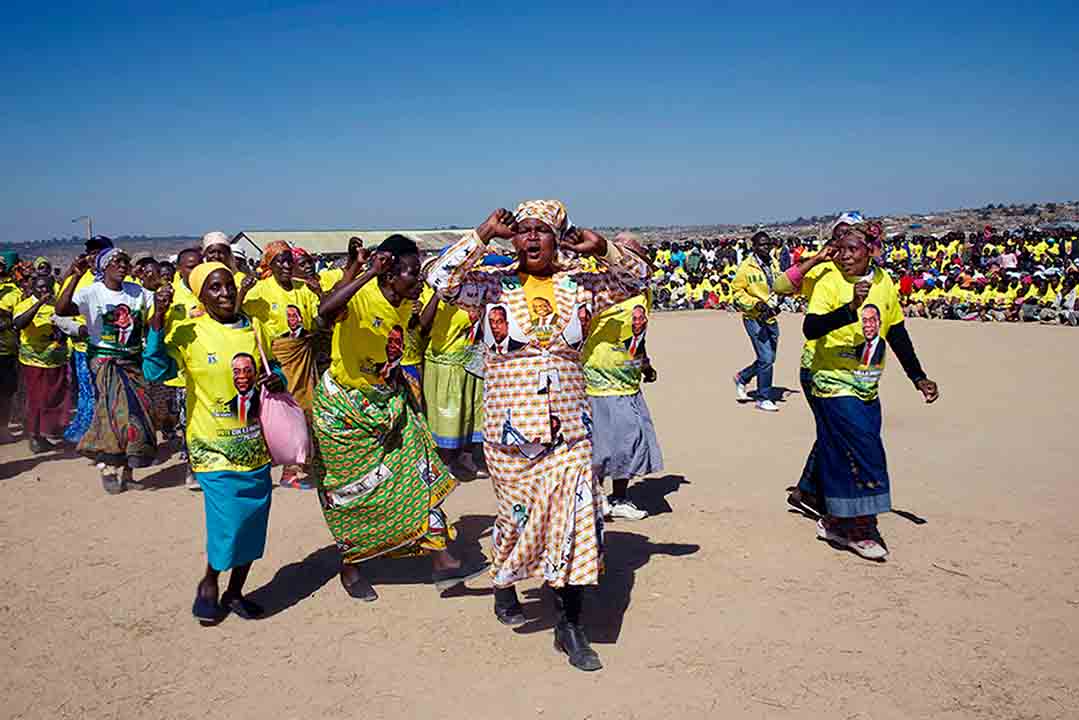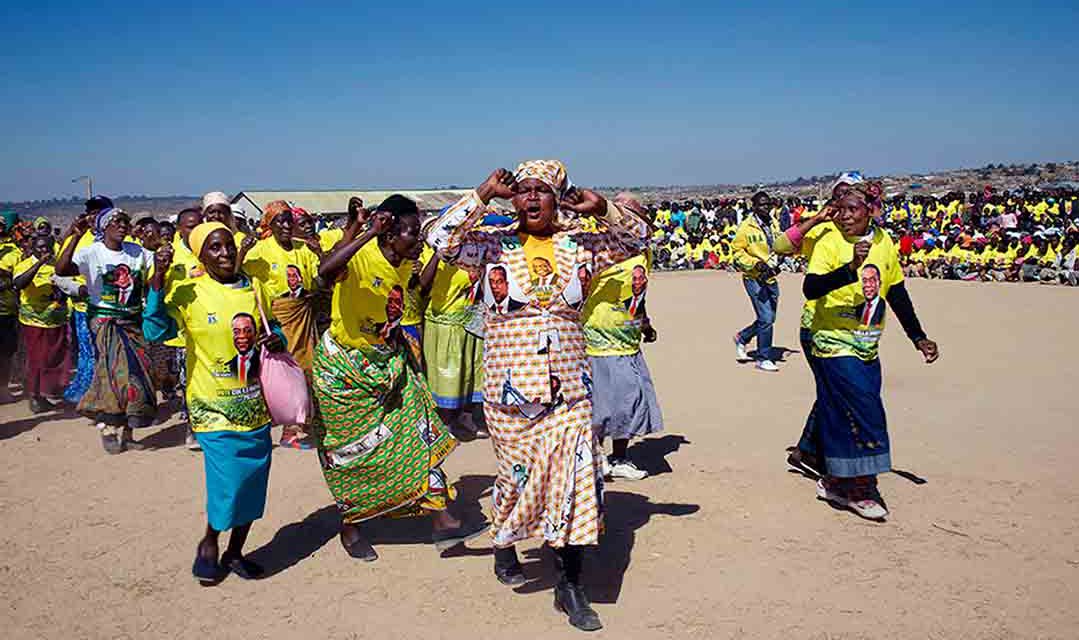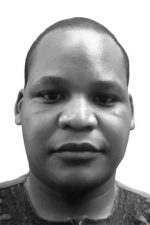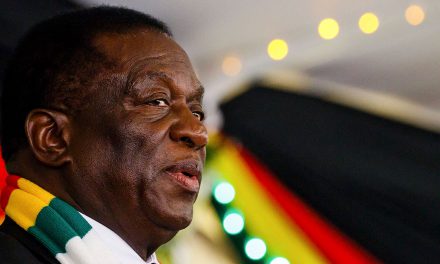Zimbabwe has found itself trapped in continuous protests and violence as citizens remain unsatisfied with electoral outcomes

Zimbabwe, Caledonia Farm area, on the outskirts of Harare, 27 July 2018. A Zanu PF rally addressed by Constantino Chiwenga who is a retired Zimbabwean general currently serving as Vice-President of Zimbabwe since December 2017. Zanu PF supporters.
Zimbabwe’s elections since 1980, when the country gained independence, have traditionally been a do-or-die affair characterised by extreme political violence, disenfranchisement of the electorate, election results contestations and echoes of political hypocrisy. Could there be something wrong with the country’s electoral system?
A fundamental bedrock of democracy is the election of political leaders through the electoral box, yet Zimbabwe’s electoral experiences have essentially impacted negatively on the country’s budding democracy. Zimbabwe’s “winner-takes-all” (WTA) electoral system used to choose the president suggests that it is not elections per se that promote democracy, human rights protection and good governance, but the quality of elections held.
Drawing lessons from Zimbabwe’s electoral experiences, we argue that the country’s WTA electoral system has often been abused, produced a fearful electorate, fear democracy and a fear governance system. Zimbabwe’s WTA politics inspire political parties’ xenophobic and malign strategies to win elections at any cost and it suffocates cohesion and the drive towards inclusive politics. In proffering policy options, we suggest electoral reforms, including proportional representation, coalition governments and more political inclusion to improve Zimbabwe’s electoral governance processes.
Zimbabwe held its first democratisation elections in 1980 when the country gained its independence from white minority colonial rule. Since then, it has been an electoral democracy that consistently holds elections after every five years without fail, a principle of which former President Robert Mugabe has always been proud. The country uses the WTA electoral system, commonly referred as a first-past-the-post (FPTP) electoral system, when choosing its president. However, Zimbabwe’s first independence election in 1980 was conducted using the proportional representation (PR) system, but the system was changed to adopt the WTA approach ahead of the 1985 elections.
Major electoral reforms, however, took place in the 2000s, when there was a transition from an election management body (EMB), which had four separate structures, to a harmonised system that followed recommended SADC Guidelines on the Conduct of Democratic Elections. In 2004, two electoral laws were passed, the Electoral Act (Chapter 2:13) and the Zimbabwe Electoral Commission Act (Chapter 2:12). The latter led to the formation of the independent electoral commission known as the Zimbabwe Electoral Commission (ZEC). The existence of an independent electoral body represents a departure from periods when, by law or de facto, electoral processes were managed in or from government departments by the very individuals responsible for manipulating elections. Though this might be the hope, electoral governance in Zimbabwe remains highly fragile and subject to manipulation.
The 1985 electoral system reforms (adopting the WTA) set the ruling Zimbabwe African National Union-Patriotic Front (ZANU-PF) on its course towards consolidating political power. The amendment of the electoral Act from the PR system, which was used once in the 1980 elections, served ZANU-PF well as it garnered 64 parliamentary seats in the 1985 elections compared to the 57 seats in 1980, while the Patriotic Front-Zimbabwe African People’s Union (PF-ZAPU) declined from 20 seats in 1980 to 15.
By the time elections occurred in 1990 there had been mass incarcerations and killings of members and leaders of opposing political parties such as PF-ZAPU and the Zimbabwe Unity Movement (ZUM) led by Edgar Tekere, a breakaway cadre from ZANU-PF. Though ZUM won 20% of the votes, the elections were far from being free and fair; it witnessed violence being unleashed through state security agents on key opposition leaders such as Patrick Kombayi, who was shot and crippled. We would assume that the WTA became a tool to garner a majority vote through any means necessary to fulfil the ZANU-PF interest of establishing a one-party state.
In realising the increasing erosion of electoral values and principles in the 1990s, Jonathan Moyo wrote a book, Voting for Democracy: Electoral Politics in Zimbabwe, in 1992. He reflected on how the “right to vote” lies at the very core of Zimbabwe’s liberation history in which the slogan “one man, one vote” was a central guiding principle for freedom and equal representation. Moyo emphasised that, “in the post-colonial Zimbabwe that right should not be taken for granted”. At the behest of this argument was an interest to protect the electorate against the impeding one-party state.

Zimbabwe, Harare, 1 August 2018. Running battles in Harare between disgruntled MDC supporters and the police /army. Fires we lit throughout the city.
A strong opposition movement, the Movement for Democratic Change (MDC), was established in 1999. The MDC was a formidable political force that pushed ZANU-PF into making the electoral environment extremely repressive. According to Makaye and Dube, “ZANU-PF employed youths and war veterans to unleash an orgy of violence on the people.” In the 2000 referendum, fear tactics were used to arm-twist citizens to vote “yes” towards the state interest to change the Constitution. Though in the following elections deaths and injuries were recorded in both ZANU-PF and MDC camps, the latter suffered the most. The 2008 run-up June elections witnessed gross violence, which witnessed members of the MDC being injured, displaced and killed. Morgan Tsvangirai had to announce his withdrawal from the run-up despite having won the first election.
Zimbabwe uses the WTA as an electoral formula to elect its president as opposed to proportional representation and semi-proportional representation, which are used in other polities. The WTA electoral system involves “two distinct but interrelated elements, namely, (a) a single winner plurality voting system for majoritarian rule and (b) the partisan monopolisation of state resources and exclusion of political opponents from national governance.” The election system manifests a zero-sum tendency that excludes other political opponents and ascribes state control to the ruling party, as has been the case in Zimbabwe for the past three decades.
Proportional representation, on the other hand, “is an electoral system that seeks to secure a close match between the percentage of votes that groups of candidates obtain in elections and the percentage of seats they receive, usually in the legislature.” PR can be through a party list or single transferable vote (STV) approach. In terms of a party list, voters vote for a list of candidates rather than a specific candidate, while under STV the voters use preferential voting to determine the results of elections. PR is used in more than 70 countries while WTA is used in about 43 countries globally, whereas others use hybrids.
Through its 2013 adopted Constitution, Zimbabwe adopted a mixed electoral system. It introduced elements of PR, whereby all senatorial seats are voted through PR and 60 permanent parliamentary seats are reserved for women from any contesting political party. Despite these slight changes in the electoral system, Zimbabwe still largely upholds a WTA approach in all the presidential, parliamentary and local government elections.
The WTA formula has always been commented for potentially having higher levels of electorate participation and accountability for the elected. However, it creates room for contemptuous marginalisation of the opposition parties and allocates state resources control to the ruling party, as has been the case for Zimbabwe. Zimbabwe’s elections have continually been a mercy affair with political campaigns being decidedly violent, dirty, ruthless, fierce and intense with perpetual unyielding practices throughout the electoral cycle. This implies WTA limitations of its democratic representation capacity as it can be unfair and highly manipulated.
It is essential to note that Zimbabwe’s political elites have always sought to manipulate and control the electorate through any means possible. The WTA electoral system has served these interests well as it has always awarded them the credibility to justify legitimacy based on the electoral numbers despite the questionable means and way in which the numbers are attained. In most cases, fear has been used to force citizens to vote and legitimise the interests of the ruling government in Zimbabwe. As such, having multiparty democratic elections without a proper transference of citizen participation in governance and state affairs as a democratic right dismisses the whole reason of elections entirely.
Since 1980, when Zimbabwe gained independence, the country has experienced violent elections leading to deaths, the destruction of property and multiple displacements. The electoral processes have been associated with electoral autocracy, with the ruling party, ZANU-PF, aggressively maintaining an electoral hegemony, which sought to establish a one-party state through violence and any means necessary. The most violent elections were experienced in 1990, 2000, 2002 and 2008. Fast forward to the post-2018 elections and the country has found itself trapped in continuous protests and violence as citizens remain unsatisfied with the electoral outcomes and the continuously deteriorating economic situation. As such, the WTA formula may require alterations.
The root causes of Zimbabwe’s WTA presidential election system is the country’s Constitution, which suggests the need for alteration.
The WTA formula has shown that it cannot yield democratic development in Zimbabwe, given past electoral experiences. This election system made Zimbabwe’s elections a mercy affair characterised by violence, contemptuous marginalisation of the opposition, and state control of national resources by the ruling party.
WTA gives room for the dominant parties to engage in excruciating violence and ethnic politics. The case of the violent polarity between ZANU-PF and the MDC is a case in point.
The WTA formula turns the country into a single-member constituency; minority groups and regions become less important, regardless of ethnic vote significances.
Given Zimbabwe’s history of electoral violence and governance intricacies, there is need to adopt a proportional-representation election formula when electing the president, as it is with the members of parliament. The ruling party may need to consider appointing government officials from other opposition parties and any other realms outside their party to create greater representivity. Establishing coalition governments may also be an option in cases where more than one party has close vote tallies as opposed to going for run-offs. However, coalition governments are often unstable.
Chapter seven of the Zimbabwe Constitution of 2013, Article 156c(i) stipulates that “at every election and referendum, the Zimbabwe Electoral Commission must ensure that appropriate systems and mechanisms are put in place to eliminate electoral violence and other electoral malpractices; and to ensure safe keeping of electoral materials.” From this, we interpret that it is possible to engage an electoral system that protects the citizens’ vote, restores constitutional dignity and human value, and ensures a fair and accountable representation of the people’s progressive and peaceful will without fear of victimisation or manipulation, hence the significance of the above reflections and recommendations.








